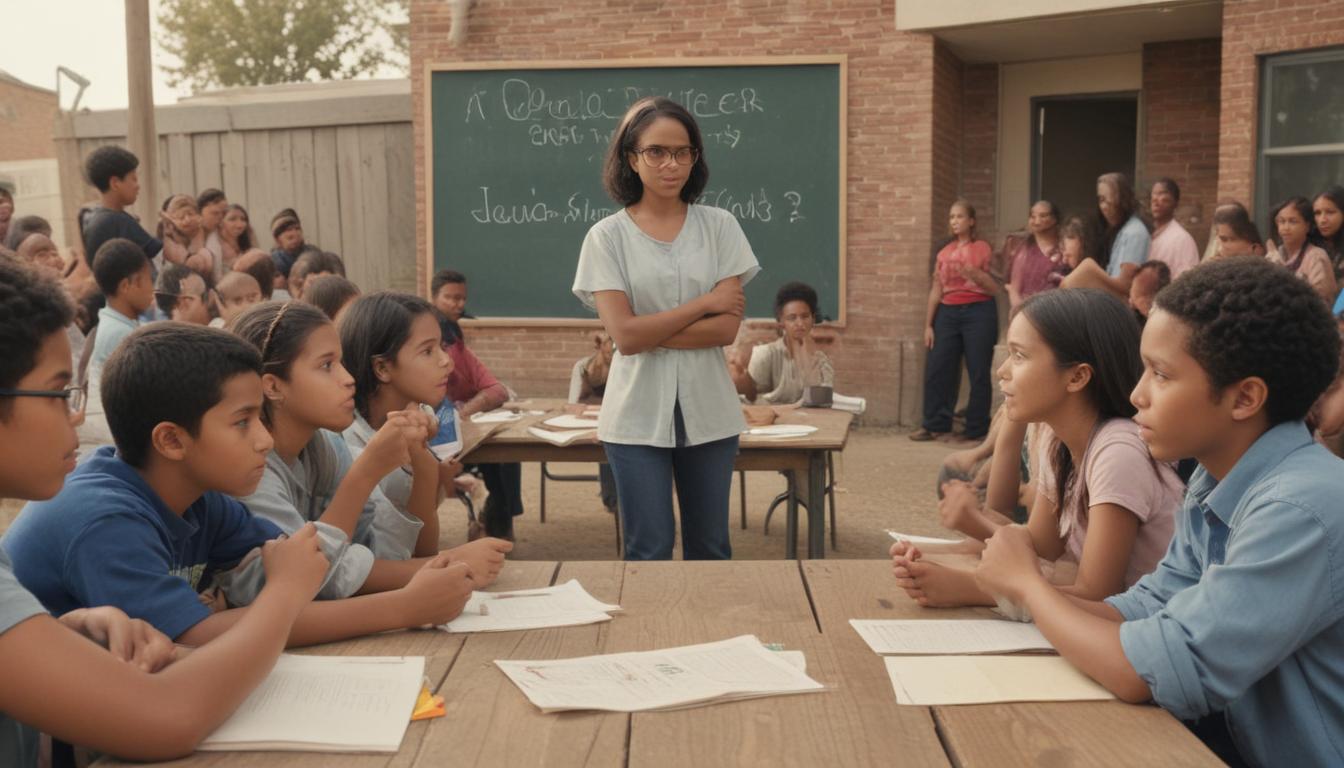Now Reading: Create Active Citizens Through Education
- 01
Create Active Citizens Through Education
Create Active Citizens Through Education

The Power of Participation Why Civic Engagement Education is Essential
Do you ever look at the world around you, from your local neighborhood to the national stage, and feel a sense of disconnect? Many of us see pressing problems, hear the constant noise of political division, and wonder if our individual voices can truly make a difference. This feeling of powerlessness is a heavy burden, leading to apathy and a belief that real change is out of our hands. We worry about the future our children will inherit, a future that seems increasingly polarized and complex.
The good news is there is a powerful antidote to this cynicism, a foundational tool that can re-engage us with our communities and empower us to shape our future. It’s called education for civic engagement. This is not about forcing a particular political view; it’s about equipping every person with the knowledge, skills, and confidence to participate in the life of their community and nation. This is your guide to understanding why this form of education is so vital and how it can transform not only our society but ourselves.
Redefining Civic Education for the Modern World
When many people hear the term “civics,” they picture a dry, dusty textbook. They remember memorizing the three branches of government, the process of how a bill becomes a law, and key dates in their country’s history. While this foundational knowledge is important, it often stops short of its most crucial goal which is to inspire action. A purely academic approach can leave learners feeling like passive observers of a complex system rather than active participants with a role to play. It teaches the “what” of government without inspiring the “why” or the “how” of personal involvement.
True education for civic engagement goes much deeper. It is an active, dynamic process focused on developing practical skills and a sense of personal responsibility. This means teaching media literacy so citizens can critically evaluate information and identify misinformation. It involves fostering civil discourse, where individuals can discuss contentious issues with respect and an open mind. It’s about learning how to collaborate with others, identify problems in a community, research potential solutions, and advocate for change effectively. This modern approach transforms civics from a subject you study into a set of tools you use throughout your life.
The Tangible Benefits of Strong Civic Education
The impact of a robust civic education extends far beyond the classroom, creating a ripple effect that benefits both the individual and the community. For the individual, it builds immense confidence. Learning how to articulate an argument, work with a team towards a common goal, and interact with local leaders develops invaluable leadership and communication skills that are transferable to any career or personal endeavor. It fosters a profound sense of belonging and purpose, connecting people to their neighbors and their hometowns in a meaningful way.
For society, the benefits are even more profound. Communities with a high level of civic engagement are healthier, safer, and more resilient. Engaged citizens are more likely to volunteer, support local businesses, attend public meetings, and hold their elected officials accountable. This active participation strengthens the very fabric of democracy, ensuring that governments are more responsive to the actual needs of the people they serve. It breaks down polarization by encouraging people to work together on local issues, like improving a park or a school, where common ground is easier to find. A well-informed and active citizenry is the ultimate defense against corruption, apathy, and the erosion of democratic norms.
Putting Civic Education into Action Practical Strategies
Implementing effective civic education requires a multifaceted approach that extends beyond the traditional school day. In schools, this can look like project-based learning where students identify a real-world problem in their community, research its causes and effects, and present a proposed solution to the city council or a local organization. It can be fostered through robust debate clubs, student government programs that have a real budget and responsibilities, and service-learning projects that directly connect classroom lessons to community needs.
This education is also a lifelong pursuit. Communities can foster adult civic engagement by having public libraries host town halls and workshops on understanding local budgets. Nonprofits can offer training on how to be an effective advocate for a cause you care about. Even neighborhood associations that organize a community cleanup or a block party are providing a form of civic education, teaching collaboration and shared responsibility. The key is to create accessible, low-barrier opportunities for people of all ages to learn by doing. It often starts small by tackling a local issue, which then builds the confidence to engage with more complex state and national challenges.
Building a Legacy of Active Citizenship
Ultimately, education for civic engagement is a long-term investment in our collective future. It is not a partisan endeavor but a foundational pillar of a healthy, functioning, and free society. It is the process by which we ensure the next generation is not only aware of their rights but is also prepared to wholeheartedly embrace their responsibilities as citizens. It is how we build communities where people feel seen, heard, and empowered to contribute to the greater good.
This work is a shared responsibility, falling to educators, community leaders, parents, and every individual who believes in a better future. It begins with the simple but profound belief that our voices matter and that we can, and must, be the architects of our own communities. By championing and participating in education for civic engagement, we are not just teaching facts; we are forging active, thoughtful, and compassionate citizens who will carry the torch of democracy for generations to come.


































